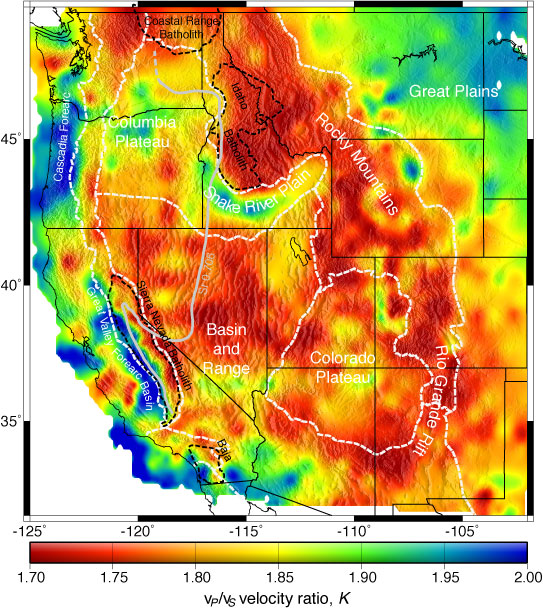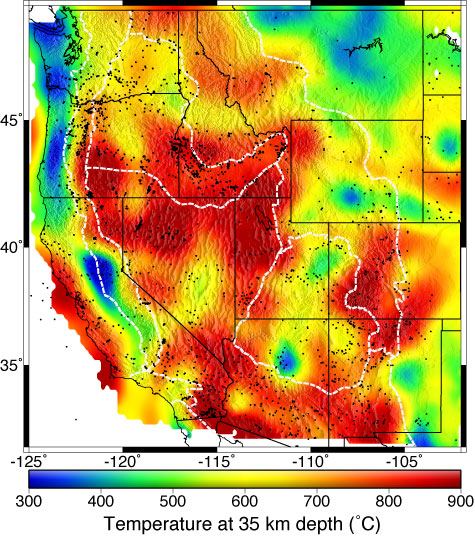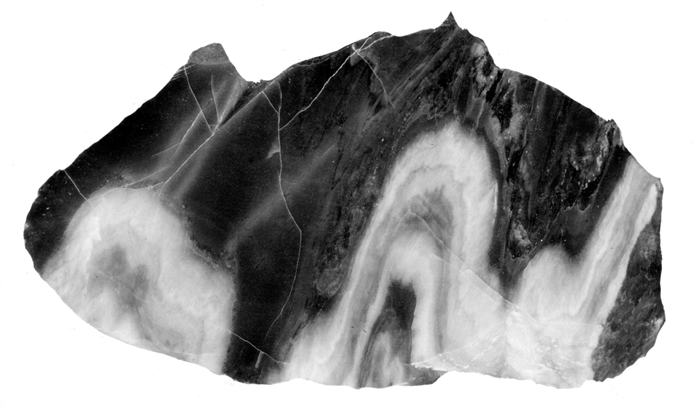|

Figure 1: Variation in averaged seismic velocity ratio, vP/vS,
of continental crust in the western United States. Red/orange colors require abundant quartz;
blue/green indicates mafic rocks with little or no quartz.

Figure 2: Elevation of the western United States. Relatively stable blocks within
the broad, deforming plate boundary zone are labeled, and are recognizable by their
low relief reflecting predominantly erosional and depositional processes. Actively
deforming regions exhibit high relief dominated by faulting.
|
New imaging (Fig. 1) of the averaged seismic velocity ratio,
vP/vS, of continental crust in the western United States
shows a surprisingly strong relationship both to deformation (Fig. 2)
and to deep temperature (Fig. 3). vP/vS in continental crust
is predominantly sensitive to quartz abundance and only slightly sensitive to temperature. To the
extent that vP/vS does depend on temperature, the
physics would predict higher vP/vS for higher temperature, so
finding the opposite relationship is surprising. The most plausible explanation for the observed
relationship between vP/vS and temperature is a robust
dynamical feedback in which ductile strain first localizes in relatively weak,
quartz-rich crust, and then initiates processes that promote advective warming,
hydration, and further weakening. Such a feedback mechanism not only
would explain stationarity and spatial distributions of deformation, but also would
lend insight into the timing and distribution of thermal uplift in the Cordillera
and observations of deep-derived fluid chemistry in springs.

Figure 3: Temperature of the lower crust, modeled from surface measurements
of the geothermal gradient (black dots) and radiogenic heat production.
|






